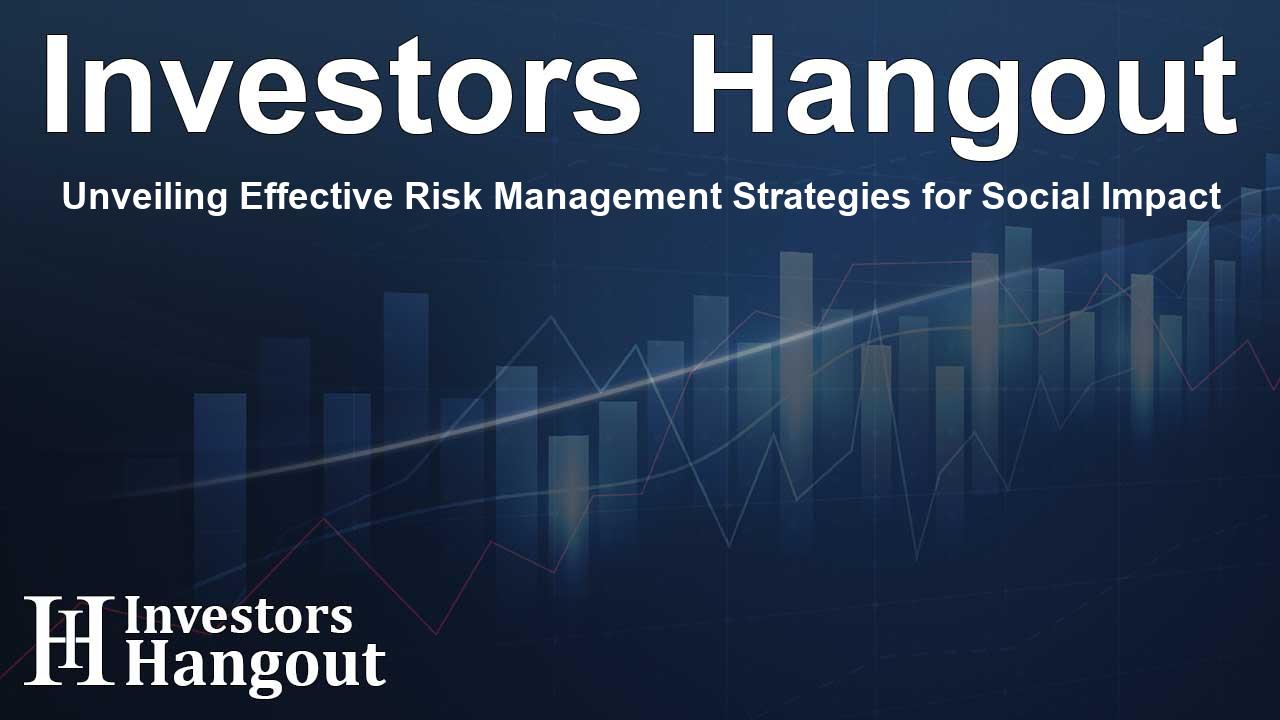Unveiling Effective Risk Management Strategies for Social Impact

Understanding Key Strategies for Effective Risk Management
In today's dynamic environment, social impact organizations are facing unprecedented challenges. To thrive amidst uncertainty, it's crucial for these organizations to embrace robust risk management strategies. A recent report by the Blackbaud Institute sheds light on how investing in technology and talent can significantly reduce concerns regarding risk management.
Insights from the Blackbaud Institute Report
The Blackbaud Institute has gathered extensive data from a nationwide survey involving 549 social impact professionals, creating the Risk Readiness: A Report on Leading with Confidence in Uncertain Times. This comprehensive report identifies key drivers that differentiate confident organizations from those that are more reactive. Proactive organizations not only manage risk but also emerge more resilient and innovative.
Identifying the Key Findings
Understanding the reasons behind organizations' readiness levels is vital. The report outlines several important findings:
Three Readiness Segments
The report categorizes organizations into three segments based on their risk readiness: Reactive (23%), Responsive (48%), and Proactive (29%). Those in the proactive segment demonstrate significantly lower concerns across all 13 identified risk areas, coupled with greater preparedness.
Government Policy and Revenue Concerns
Among the primary concerns highlighted are shifts in government policies and revenue streams. Alarmingly, only 30% of survey respondents feel adequately prepared for these challenges. Proactive organizations, however, tend to stay ahead by frequently updating their strategic plans and setting clear fundraising goals.
The Role of Technology in Risk Management
Technology emerges as a crucial differentiator between reactive and proactive organizations. Those who actively invest in tech solutions not only worry less about data security but also enhance their overall preparedness. Proactive organizations have been noted to upgrade their technology, integrating multiple solutions to improve their operations.
Addressing Staff Continuity
Staff continuity presents a significant challenge. Staff burnout ranks high among organization-related issues. While many organizations recognize the risk, less than a quarter have formal staff continuity plans in place. Proactive leaders are prioritizing talent investment and improving communication to bolster their teams.
Resource Allocation Doesn't Dictate Readiness
One of the key takeaways is that organizational size and budget do not determine readiness. Among proactive entities, a majority have fewer than 100 employees, and many report revenues below $11 million, emphasizing that a strategic mindset prevails over sheer resources.
Utilizing the Readiness Assessment Tool
The report introduces a readiness assessment tool, enabling organizations to evaluate their preparedness and receive tailored action steps. This tool fosters awareness and provides leaders with insights to build resilience in their operational frameworks.
About the Blackbaud Institute
The Blackbaud Institute specializes in developing valuable research and bringing together expert opinions to benefit the social impact community. Leveraging Blackbaud's extensive dataset, the Institute aims to provide actionable insights that help organizations improve their operations and approach to social responsibility.
About Blackbaud
Blackbaud (NASDAQ: BLKB) is renowned for being a frontrunner in software solutions designed for social impact initiatives. With a commitment to the nonprofit and educational sectors, Blackbaud focuses on enhancing capabilities in fundraising, financial management, and grantmaking, reaching millions globally. Recognized for its operational excellence, Blackbaud continues to explore innovative avenues to expand its impact.
Frequently Asked Questions
What is the main focus of the Blackbaud Institute report?
The report emphasizes effective risk management strategies for social impact organizations, based on survey data and expert opinions.
How can technology influence risk management?
Organizations that leverage technology proactively tend to navigate risks more effectively, showing greater operational resilience.
What are the categories of organizational readiness?
Organizations are categorized into Reactive, Responsive, and Proactive segments based on their cumulative readiness scores.
Are larger organizations inherently more prepared?
No, the report indicates that readiness is more related to strategy and mindset than to the size or budget of an organization.
How can organizations assess their risk management readiness?
The Blackbaud Institute offers a readiness assessment tool to help organizations evaluate their preparedness and develop personalized action plans.
About The Author
Contact Ryan Hughes privately here. Or send an email with ATTN: Ryan Hughes as the subject to contact@investorshangout.com.
About Investors Hangout
Investors Hangout is a leading online stock forum for financial discussion and learning, offering a wide range of free tools and resources. It draws in traders of all levels, who exchange market knowledge, investigate trading tactics, and keep an eye on industry developments in real time. Featuring financial articles, stock message boards, quotes, charts, company profiles, and live news updates. Through cooperative learning and a wealth of informational resources, it helps users from novices creating their first portfolios to experts honing their techniques. Join Investors Hangout today: https://investorshangout.com/
The content of this article is based on factual, publicly available information and does not represent legal, financial, or investment advice. Investors Hangout does not offer financial advice, and the author is not a licensed financial advisor. Consult a qualified advisor before making any financial or investment decisions based on this article. This article should not be considered advice to purchase, sell, or hold any securities or other investments. If any of the material provided here is inaccurate, please contact us for corrections.
